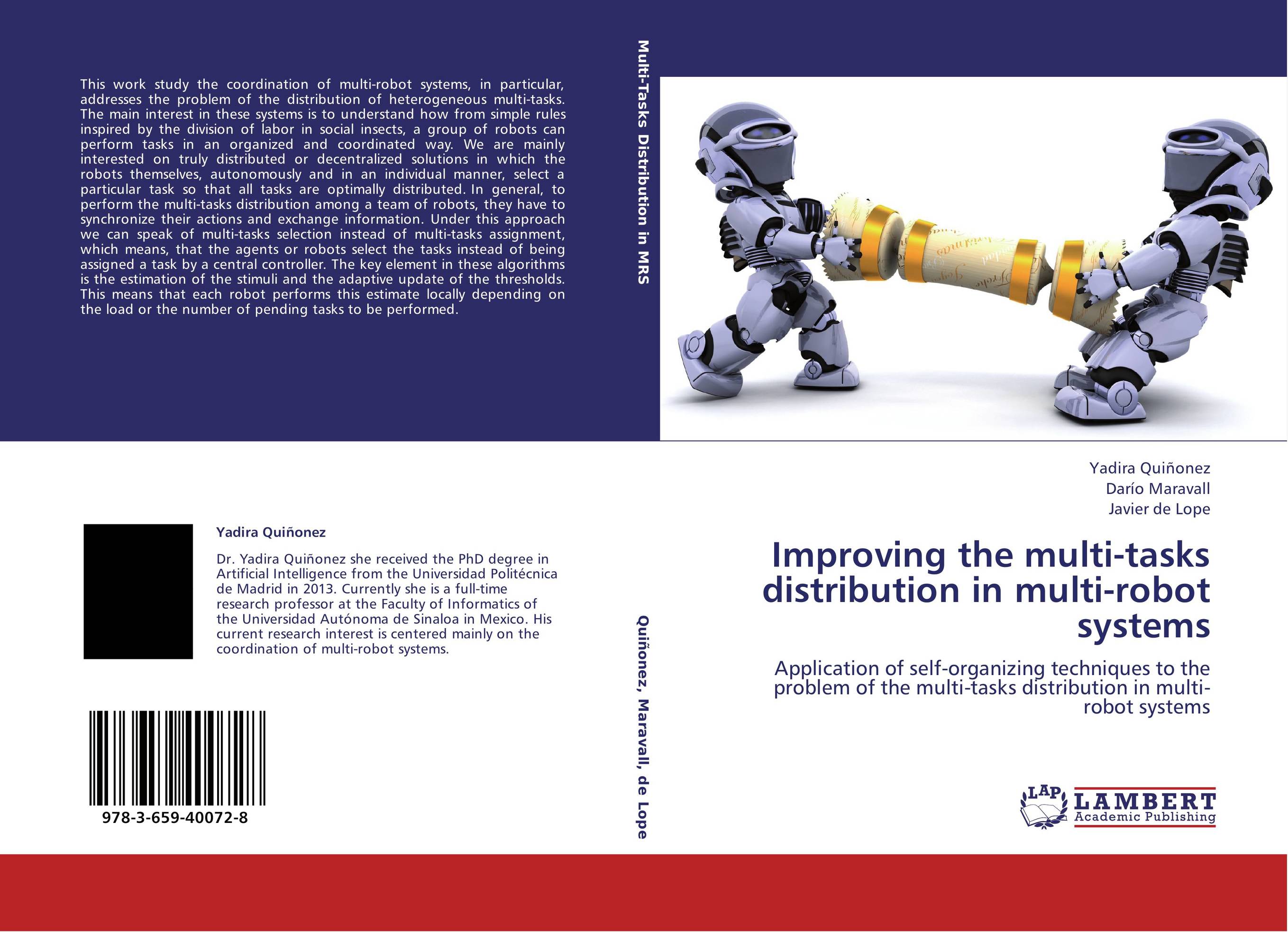| Поиск по каталогу |
|
(строгое соответствие)
|
- Профессиональная
- Научно-популярная
- Художественная
- Публицистика
- Детская
- Искусство
- Хобби, семья, дом
- Спорт
- Путеводители
- Блокноты, тетради, открытки
Improving the multi-tasks distribution in multi-robot systems. Application of self-organizing techniques to the problem of the multi-tasks distribution in multi-robot systems

В наличии
| Местонахождение: Алматы | Состояние экземпляра: новый |

Бумажная
версия
версия
Автор: Yadira Qui?onez,Dar?o Maravall and Javier de Lope
ISBN: 9783659400728
Год издания: 2013
Формат книги: 60×90/16 (145×215 мм)
Количество страниц: 132
Издательство: LAP LAMBERT Academic Publishing
Цена: 25954 тг
Положить в корзину
Позиции в рубрикаторе
Отрасли знаний:Код товара: 122766
| Способы доставки в город Алматы * комплектация (срок до отгрузки) не более 2 рабочих дней |
| Самовывоз из города Алматы (пункты самовывоза партнёра CDEK) |
| Курьерская доставка CDEK из города Москва |
| Доставка Почтой России из города Москва |
Аннотация: This work study the coordination of multi-robot systems, in particular, addresses the problem of the distribution of heterogeneous multi-tasks. The main interest in these systems is to understand how from simple rules inspired by the division of labor in social insects, a group of robots can perform tasks in an organized and coordinated way. We are mainly interested on truly distributed or decentralized solutions in which the robots themselves, autonomously and in an individual manner, select a particular task so that all tasks are optimally distributed. In general, to perform the multi-tasks distribution among a team of robots, they have to synchronize their actions and exchange information. Under this approach we can speak of multi-tasks selection instead of multi-tasks assignment, which means, that the agents or robots select the tasks instead of being assigned a task by a central controller. The key element in these algorithms is the estimation of the stimuli and the adaptive update of the thresholds. This means that each robot performs this estimate locally depending on the load or the number of pending tasks to be performed.
Ключевые слова: ant colony optimization, multi-robot systems, Bio-inspired Threshold Models, Stochastic Learning Automata, Multi-tasks Distribution, self-coordination of multiple robots and reinforcement learning



